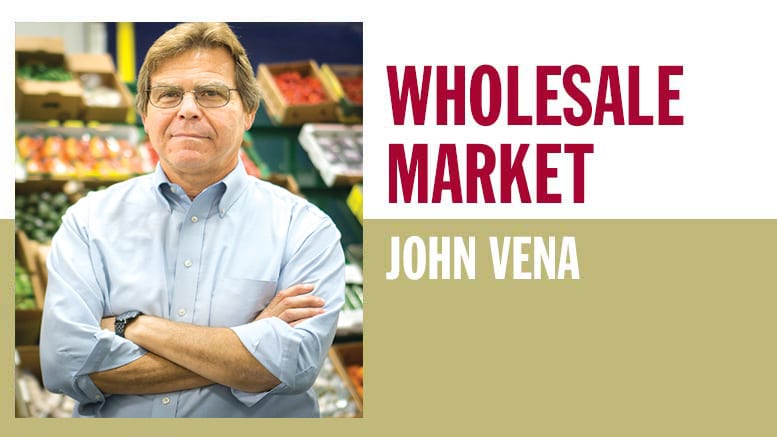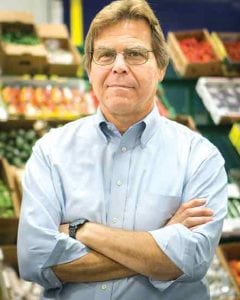Reflecting On 100 Years Of Produce … People And Tools
December 2, 2018 | 4 min to read
As John Vena reflects on his family's century-long journey in the fresh produce industry, he recognizes the enduring importance of relationships with suppliers and customers. Although technology has advanced significantly since his grandfather founded the business in 1919—with innovations like pallet jacks and computers—core values remain unchanged. Vena prepares for the future by fostering creativity and collaboration, ensuring that the essence of their success, centered on people, continues to thrive for the next generation.

Originally printed in the December 2018 issue of Produce Business.
 Our family business is about to celebrate 100 years of fresh produce sales. As a result, I find myself looking back on a much longer time frame than usual at year’s end.
Our family business is about to celebrate 100 years of fresh produce sales. As a result, I find myself looking back on a much longer time frame than usual at year’s end.
My grandfather, John Vena, founded and closed several businesses while building this company and never anticipated that the produce business he founded in 1919 would operate into the next century. In fact, changes in the industry during the boom times following World War II led him to conclude that the real future was in the retail liquor business in New Jersey. So much for intentions. He died before he could take action on his liquor store plan, and his son, daughter, and son-in-law suddenly found themselves in charge of the team my grandfather assembled at John Vena Produce.
During my grandfather’s tenure, little changed in the way fresh produce was handled. Sales and sourcing, much the same as today, were based on strong relationships with his shippers and customers.
Suppliers were available by telephone and telex, but almost every sales transaction was done face-to-face, while the buyer inspected, touched or tasted the product. Every sale was written on a “two-part” sales book using carbon paper to create the customer’s pick ticket and to record the details of each transaction. Bookkeepers dutifully entered this data on large, handmade spreadsheets, and customer invoices were hand-typed each day. Produce was floor-loaded on trucks or railcars, and each package was moved by hand four to six times before it reached the end user.
As a direct receiver and commission merchant in Philadelphia, many of my grandfather’s customers were small, regional wholesalers that drove to the Market on Dock Street once or twice per week to load what their customers required. When my grandfather died in 1951, these systems had not changed. When I joined the company in 1976, we were still using the same systems and tools developed by my grandfather.
My job now is to allow space for that creativity and to continue to foster supplier and customer relationships. People are what is truly important to business success. That has not changed in the last 100 years and is unlikely to change in the next.
The long curve of technological improvement in the produce terminal market business in Philadelphia really began in 1959 with the opening of the Philadelphia Regional Produce Market on Galloway Street. The new market had truck-height loading docks, allowing the use of wooden pallets, forklifts and pallet jacks. These were huge innovations in product handling. My father quickly saw the advantage of these tools, and John Vena Inc. was an early adopter, acquiring a pallet jack in the early 1960s.
The biggest innovation in communications technology came with the push-button phone in the 1970s, but most sales were still conducted face-to-face with customers. Sometime in 1985, we purchased our first fax machine. It used thermal paper on rolls and was so well-made that we only retired it because our office supply dealer stopped stocking thermal paper.
From that purchase in 1985 until 1997, we added more new technology than had been introduced to the company in the previous 65 years. Our first computer (an IBM System 36 bought in 1990) did away with my grandfather’s spreadsheets, sales books and hand-typing of invoices. In 1997, I bought my first cell phone in a “bag.” It had a battery the size and weight of a brick, and for the first time in my career, I didn’t have to be in the office or at home to talk to suppliers or customers; I could talk to them from the sidelines of my children’s soccer games. Plain paper printers and fax machines enhanced our ability to share data. We also purchased our first PC in order to set up an email account, although by today’s standards, using that account was like using a hand-crank telephone. In 2000, all that hardware was replaced, and since then, the pace of upgrades to our hardware and software systems has been terrifying and wonderful.
Until now, most of the tools we have integrated into our business have been centered on data management and communication. We have added automated packaging lines, but many aspects of our business have not changed since my father bought his first pallet jack. Certainly the application of robotics and systems run by artificial intelligence will be decisions facing company leaders soon enough.
But these things are just tools. I probably will not be making decisions about robotics, however, it is totally appropriate for me to be considering them now, in order to lay the groundwork for the next 100 years of my grandfather’s company. My son, Daniel, likely will make those choices. Dan is not a digital native, but many of our new hires are. As they mature in the business, their creativity will help drive the technology decisions that must be made to remain relevant in the marketplace.
My job now is to allow space for that creativity and to continue to foster supplier and customer relationships. People are what is truly important to business success. That has not changed in the last 100 years and is unlikely to change in the next.
John Vena is the owner of John Vena Inc., a family owned and operated produce business located in the Philadelphia Wholesale Produce Market. Founded in 1919, the company is a fourth generation family business bearing the name of John Vena’s grandfather.
7 of 19 article in Produce Business December 2018

